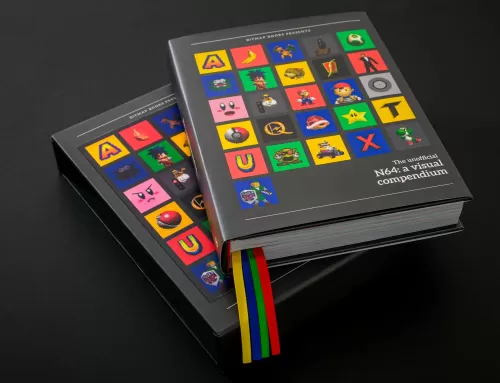Revisiting F1 video game racing from 1998

There are so many games to choose from these days and different platforms that it can be overwhelming deciding where to start. And, sometimes you simply want to delve into an old favourite or a series you have heard great things about but never played. Nothing wrong with it, no judging here. In fact, I am definitely guilty of spending many hours playing the old timers as much as the shiny new stuff. So, in this particular section, I will take the time to play a game of the past which could range from the NES era all the way to the Xbox 360/PS3 generation and share my thoughts with a rating out of five.

Paradigm Entertainment’s first stab at the Formula 1 licence in 1998 on the Nintendo 64 is a ground-breaking achievement as a simulation of the sport and is still plenty fun over 20 years later.
For those that followed this latest F1 season and that finale, the desire to jump into an F1 video game cockpit and duke it out with a rival may have been significantly higher. It certainly was for me. And to meet that need, I decided to ruffle through my old games boxes and wipe the dust off this old classic for this week’s Retro Review segment.
Now, what strikes me on revisiting this game is the attention to detail. It’s incredible. Considering this was Paradigm’s first attempt at the sport (and it was on the N64 as opposed to a PC), the amount of customisation to the car and how it affects the drivability is astonishing. Not only can you modify tyres and fuel levels but also the rear/front wings, suspension, gear ratios and even the steering sensitivity (there is even the option to use a plug-in compatible steering wheel but I haven’t been able to try this out.)
And all really do affect the performance. Yet, it did take me a while to get comfortable with making decisions to change from the default but with more time spent with the game I recognised certain tracks would require specific alterations. On tracks with long straights such as Germany’s Hockenhiem the downforce would need to be set low and for Hungary’s twisty-turny one it would be the opposite. For the tight street circuits like Monte Carlo with high risk of damage you would need to consider the suspension setting. Actually, that track specifically is ludicrously tough and guaranteed on your first few attempts you will be hilariously ping-ponging across the barriers (not usually a race-winning tactic).

This wouldn’t be half as important if the actual controls weren’t as refined as they are and just as impressively the feel of the driving is terrific. There is definitely a learning curve and it will take some time to get used to the tracks (even as an F1 fan there was tracks I barely remember that disappeared shortly afterwards like Argentina and Jerez). Once you do, it is all about putting in the laps and gauging where to brake or coast. Of course, with damage or tyre wear the car’s grip does noticeably change and so you will feel less confident with your cornering.
It wouldn’t be F1 without the ever changing conditions and when rain hits (it looks beautiful too) the car balance really does alter. Again, being on the right tyre is imperative and slick tyres on a rain soaked circuit will only end in carbon-fibre tears. The developers really nailed the essentials of the sport with this game. However, there are really only two settings for weather: dry/sunny or interchangeable (always begins dry and becomes rainy then becomes dry again. Every time.) My issue with this is that it is called Random which this isn’t. A shame, but is rectified in the sequel.
As for modes, the game has the standard Exhibition race which allows you to pick a driver of the 22 racers of that season as well as one of the 17 circuits, set the AI difficulty, race conditions and all manner of things from damage (car damage actually impacted) to flags being used (yellow flags for incidents, warning flags for unfair driving, etc) and then get to it. There is also a neat ’97-Events option which tries to emulate the races of that year with driver grid positioning, retirements and finishes and, although not perfect, is a decent recreation of the events and another little flourish that Paradigm added which make this such a considered product.
The Exhibition races are the closest to a tutorial as they allow experimentation as a true beginner will want the damage and flags off with the racing line being visible and the AI on Rookie setting. But over time I learned the tracks and became a regular podium finisher. Once this happened I started altering options to include damage and flags and upped the CPU drivers to Professional (they are noticeably faster and won’t be easy to overtake).

Once confident I then jumped into the Grand Prix Championship mode which is a season of 17 races with one chosen driver. All are present apart from one; Jacques Villenueve had some bizarre licensing issue which meant his name couldn’t be used so the other Williams driver was simply Driver Williams. However, it is customisable (conceivably as a way to get round it so folk could put him in the game themselves as his stats are present). But I preferred to race as rookie Steven Barry and, boy, did he have a great couple of seasons.
With the option to put in lots of practice laps on the Friday and Saturday Practice sessions I became at one with the track and the set-up of the car that by each Qualifying and race day I was unstoppable. It was fun most of the time but by the latter half of the season when my points were quadruple everyone else’s it became a little monotonous. I actually imagined how boring it must have been for the digitised crowd that season seeing my Williams car never really challenged. Those poor flat sprites.
So with two dominant seasons behind me on the first two difficulties I expected to give the hardest setting a go. However, on that difficulty not only are the CPU drivers tougher but the tyre sensitivity is significantly increased that as soon as you come off the racing line you will spin out of control. It’s unplayable. Shame, as the gulf between the middle difficulty and the hardest is so vast.
So, those modes alone make a decent package but Paradigm also included a Challenge Mode which is a series of scenarios from the real 1997 season to overcome as a specific driver (grouped as Offensive, Defensive and Trouble). These are brilliant snap shots of a race-in-progress which puts you in the cockpit of a driver who either has to make a set of passes within a few laps, hold off a faster car behind you, overcome failing gearbox issues (or in one punishing case, a tyre flying off) with points being scored on how well you do. It’s a fantastic mode with a great difficulty curve as the first few are pretty easy but the final unlocked ones are brutal (the tyre flying off specifically was ridiculous as you have to control Fisichella’s fish-tailing F1 car on three wheels back to the pits in time to get out and retake your lost positions). It’s gripping stuff but will take time to complete each one and unlock the bonus content (hidden track and a super speedy gold race car).

The final available modes are time trial and two-player split-screen multiplayer. I barely did the time trial as I find it a little soulless and unfortunately couldn’t try out the multiplayer as no opportunity for a pal to pick up a second controller (and I know my girlfriend well enough to not even suggest it).
Visually the game has obviously aged but it looks decent enough and for its time it is actually very impressive. The backdrops aren’t too foggy unlike many N64 games and the frame rate is consistently 30 fps (at least on single player). Sure, there is a fair amount of grainy textures, some pop-in here and there and some blocky car models. The cars specifically are true-to-life in design (up close) but they do significantly lose detail when viewed from distance. But for its time in 1998, this was a gorgeous looking title.
The rest of the presentation is equally nice with elegant menus, of-its-era realistic telemetry HUD design and the music is fantastically ’90s indie-rock. Additionally, your radio engineer sounds like David Coulthard and keeps you updated on your lap times, your rivals distance ahead or behind you and any flags you need to be aware of. It’s a nice touch but you may want to have your own playlist or podcast on in the background as the continual drone of the digitised V10 engine does grate, especially over long races.
Verdict – Overall, there is a tremendous amount of content in this game and I am still baffled that this was their first attempt at the sport. There are definitely areas that could be improved and was fixed in the sequel the following year. But as a stand-alone 64-bit era F1 game, this is a champion. In fact, it picks up the constructors title and the drivers title whilst leaving the competition trailing in the dust.
For an understanding on the thought process behind the Gamerhub review system, please check this page.





